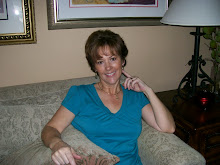 The above is the front as you are heading into the circus buildings. It has similar architecture to his mansion,Ca' d' Zan (House of John).
The above is the front as you are heading into the circus buildings. It has similar architecture to his mansion,Ca' d' Zan (House of John). This is one of the builidings of 5 that house some of the memorabilia from the old days of the circus.
This is one of the builidings of 5 that house some of the memorabilia from the old days of the circus. A picture of one of the costumes worn by a performer.
A picture of one of the costumes worn by a performer. One of the more elaborate clown costumes.
One of the more elaborate clown costumes. This dipicts how the various carvings were made. Here is one of a partial camel. I always thought it was carved from solid wood, but actually it is made from several 2x4's glued together, then carved. The circus had their own staff of woodworkers to carve the ornate details of the different wagons used to house the animals, etc..
This dipicts how the various carvings were made. Here is one of a partial camel. I always thought it was carved from solid wood, but actually it is made from several 2x4's glued together, then carved. The circus had their own staff of woodworkers to carve the ornate details of the different wagons used to house the animals, etc.. This is a picture of a picture so the quality isn't very good, but this is John and Mabel Barnum's private car on their pullman, named "Wisconsin" where the family originated. It was the only one that had a double bed, a dresser and a bathroom. All the others had twin beds with double berths, a smalll toilet and sink.
This is a picture of a picture so the quality isn't very good, but this is John and Mabel Barnum's private car on their pullman, named "Wisconsin" where the family originated. It was the only one that had a double bed, a dresser and a bathroom. All the others had twin beds with double berths, a smalll toilet and sink. This is what the top of the outside of the pullman car looked like. It is made of beautiful stained glass and ornately carved silver. You can see a peek into one of the portions of the pullman.
This is what the top of the outside of the pullman car looked like. It is made of beautiful stained glass and ornately carved silver. You can see a peek into one of the portions of the pullman.
This is about half of the railway car shown here. Unfortunately looking in was so dark that the camera couldn't really pick up what it looked like. It had gorgeous dark mahogany wood all handcarved as paneling. The sofas were made of green tufted velvet and could be pulled out to house some of their family and friends if need be. There was a full-sized dining table with 8 chairs, an observation car at the end where the men would have their cigars, and a rather large kitchen, considering the width they had to deal with.
 On of the carved wagons used in the 1920's.
On of the carved wagons used in the 1920's. 1920 "Jesters" calliope.
1920 "Jesters" calliope.
One of the cages used for the animals when traveling through towns to advertise the circus.
 I wish I had thought to have a person in this photo as you can't get a clear concept of how huge these posters are, but the next photo shows a closeup and you can see a line across the center where it was folded in order to transport.
I wish I had thought to have a person in this photo as you can't get a clear concept of how huge these posters are, but the next photo shows a closeup and you can see a line across the center where it was folded in order to transport. See the line? These had to be at least 20' high and each one advertised a different performer from the bearded lady to the 2-headed human.
See the line? These had to be at least 20' high and each one advertised a different performer from the bearded lady to the 2-headed human. This is a sneak peek of my next post which will show vivid detail of the minature circus that took over 50 years to construct by philanthropist Howard Tibbals. This is an overview of his amazing work. It took one year to set this up as he wanted it to represent the circus "exactly" as it was in the days when the Big Top was a traveling show (1919-1938). This sits on 3,800 s.f. in a 3/4" scale to the foot. The collection consists of 1300 performers and workers, over 800 animals, 152 wagons, 8 main tents, and a 59-car train.
This is a sneak peek of my next post which will show vivid detail of the minature circus that took over 50 years to construct by philanthropist Howard Tibbals. This is an overview of his amazing work. It took one year to set this up as he wanted it to represent the circus "exactly" as it was in the days when the Big Top was a traveling show (1919-1938). This sits on 3,800 s.f. in a 3/4" scale to the foot. The collection consists of 1300 performers and workers, over 800 animals, 152 wagons, 8 main tents, and a 59-car train.









4 comments:
What a fun place to visit! I love the circus.
Fantastic. Thank you for sharing this and giving all the background and pictures. Can't wait till the next one.
Beautiful photos and history!
Klaire
MysticSilks
o my gosh. I bet that was an amazing trip. The costumes are to die for!
Post a Comment